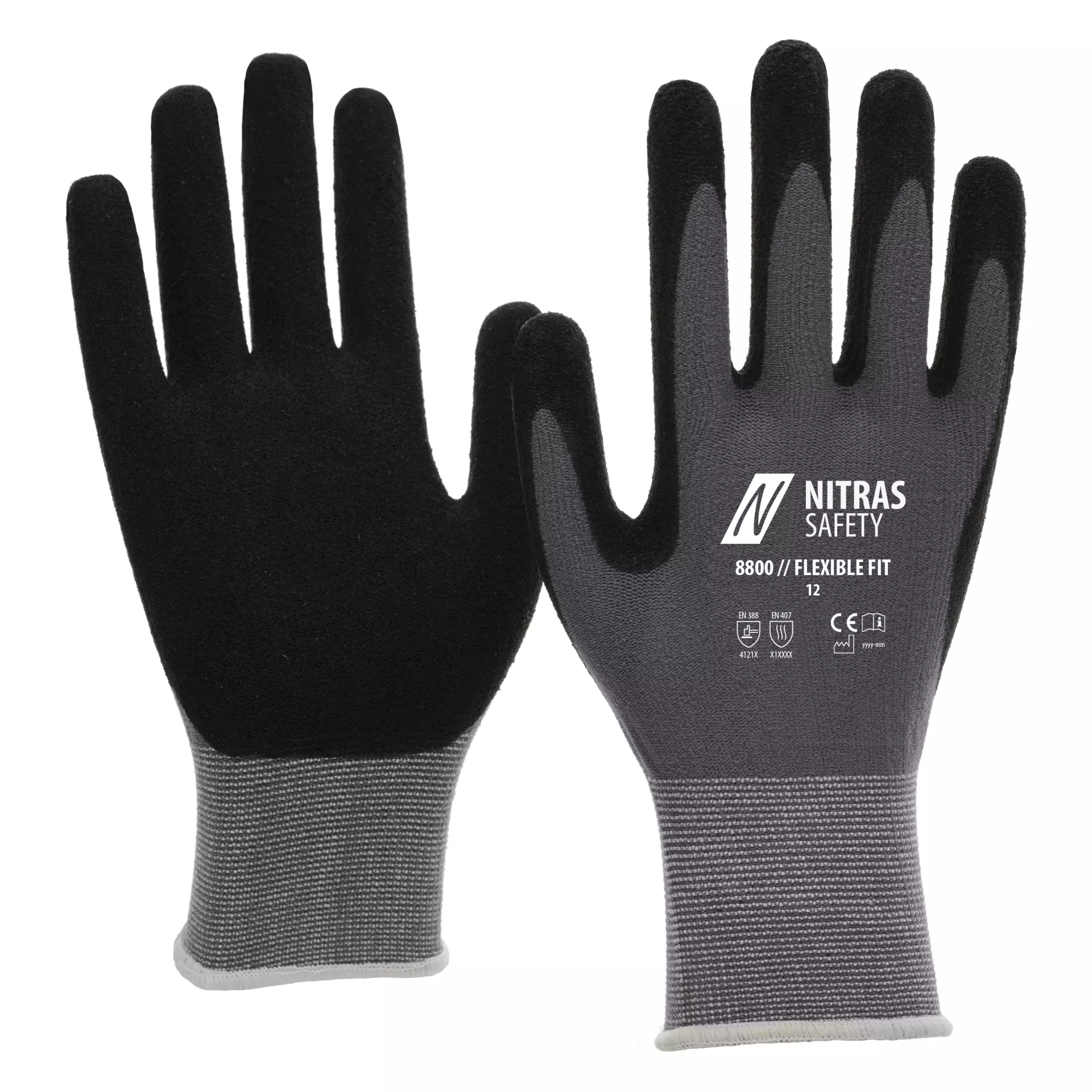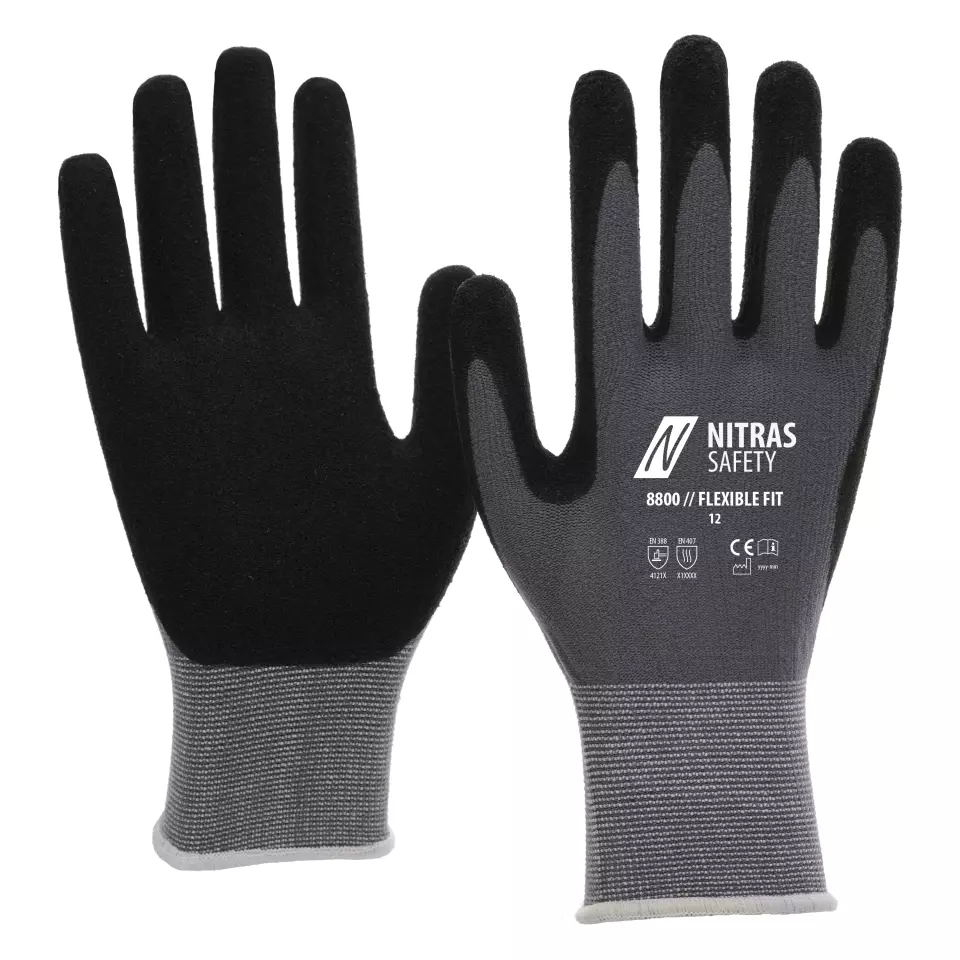

Features You'll Love

Cuff Style · Knit
Determines how the glove secures around the wrist, affecting fit, protection from debris, and ease of putting gloves on and taking them off.

EN 388 · Tear Resistance Level 2, Puncture Resistance Level 1, Abrasion Resistance Level 4
Offers moderate resistance against snagging or catching on rough objects, preventing small rips from growing.
Provides basic protection against punctures from blunt objects like splinters, not sharp points like needles.
Offers the highest level of protection against intense rubbing and wear from rough materials.
Nitras
FLEXIBLE FIT Knitted Gloves, Grey, 12 pairs
FLEXIBLE FIT Knitted Gloves, Grey, 12 pairs
(20)
27,29 €
Price per 12 pairs
2,27 € / pair
Choose size
Shipping fee is 7,95 € for orders under 80,00 €
Features You'll Love

Cuff Style · Knit
Determines how the glove secures around the wrist, affecting fit, protection from debris, and ease of putting gloves on and taking them off.

EN 388 · Tear Resistance Level 2, Puncture Resistance Level 1, Abrasion Resistance Level 4
Offers moderate resistance against snagging or catching on rough objects, preventing small rips from growing.
Provides basic protection against punctures from blunt objects like splinters, not sharp points like needles.
Offers the highest level of protection against intense rubbing and wear from rough materials.
Product description
Professional knitted gloves featuring a special stretch fabric construction with partial coating on palm and fingertips for enhanced grip and protection. These gloves combine superior dexterity with water-repellent properties in the palm area, while the knitted wrist ensures a secure fit. Certified according to STANDARD 100 by OEKO-TEX®, these gloves deliver premium quality and comfort for precise handling tasks.
Product Features:
- Special stretch fabric construction
- Partial coating on palm and fingertips
- Knitted wrist design
- Water-repellent palm
- Enhanced slip resistance
Technical Details:
- Premium quality materials
- STANDARD 100 by OEKO-TEX® certified
- Optimized for dexterity and comfort